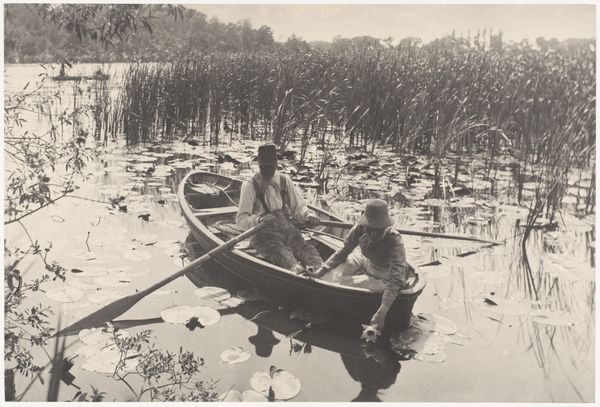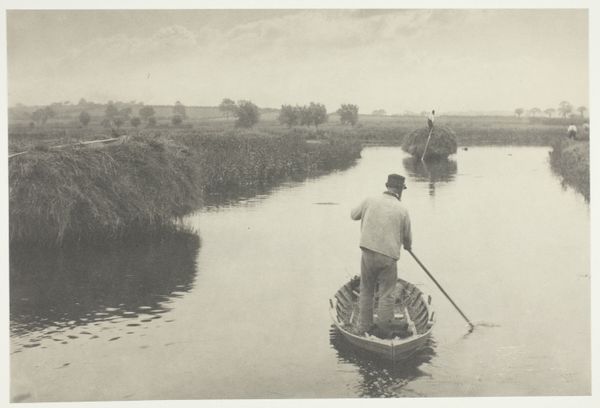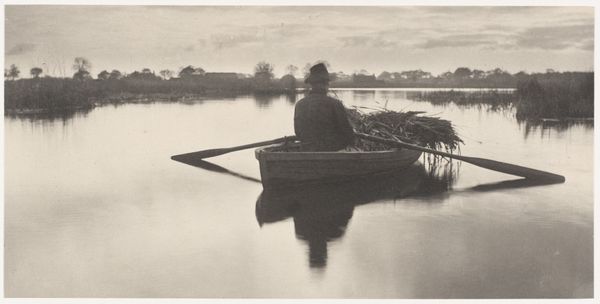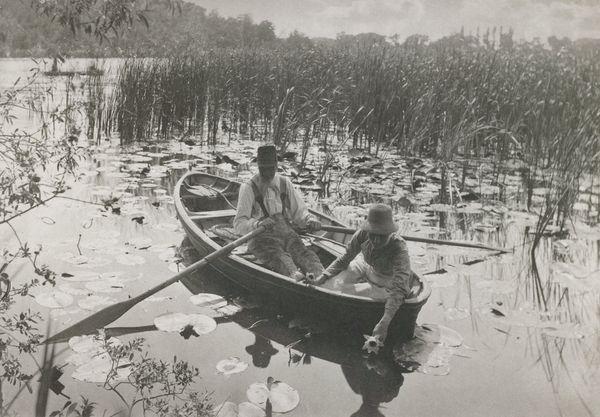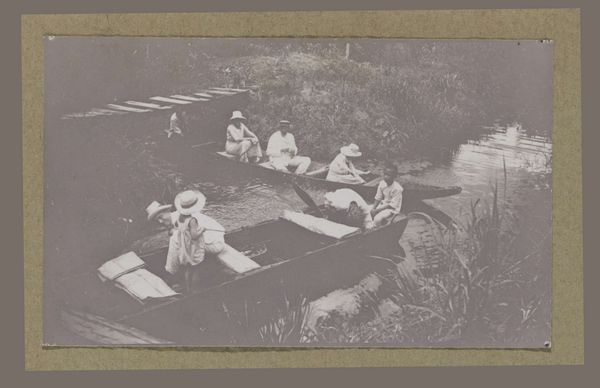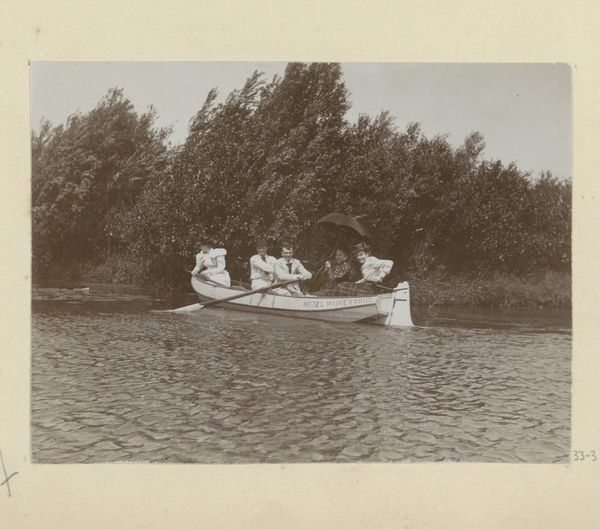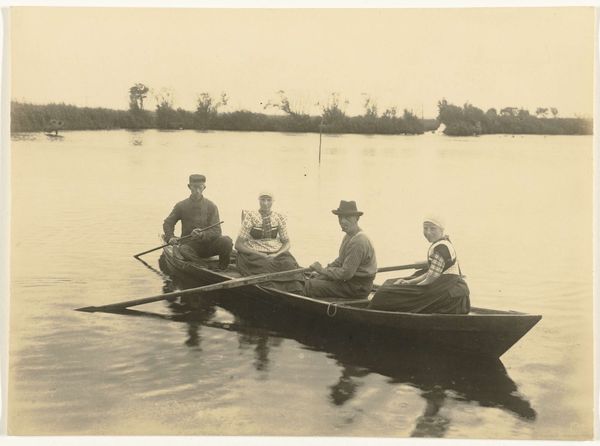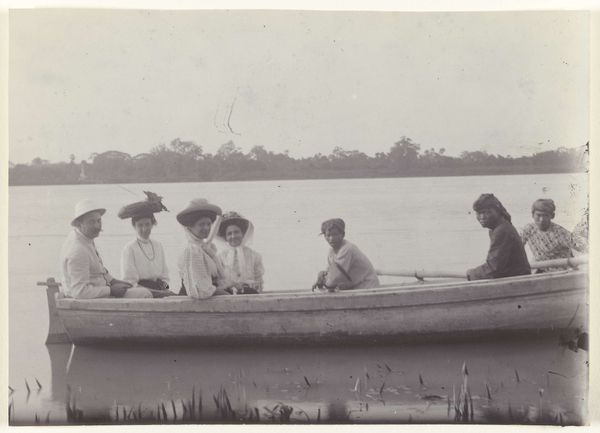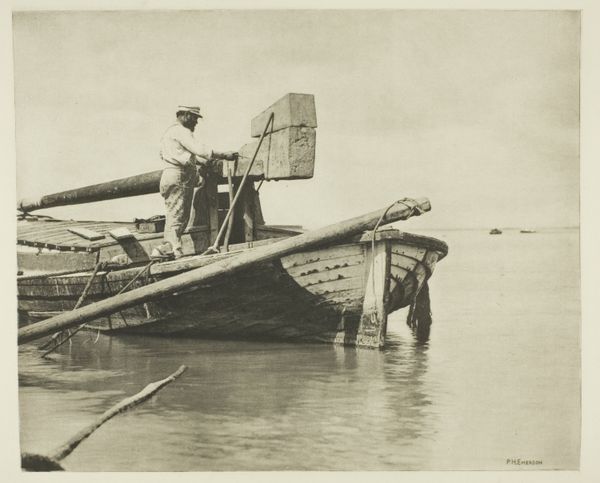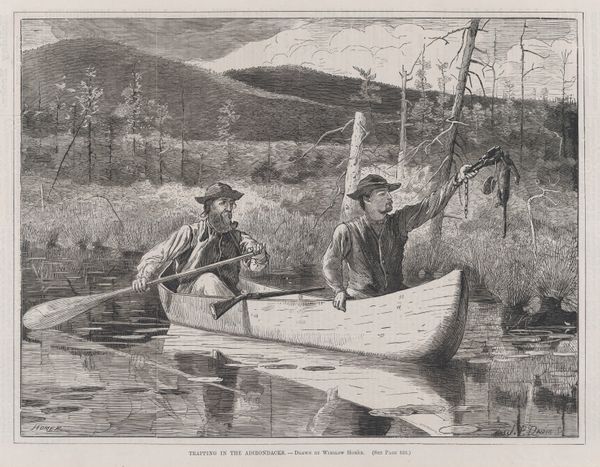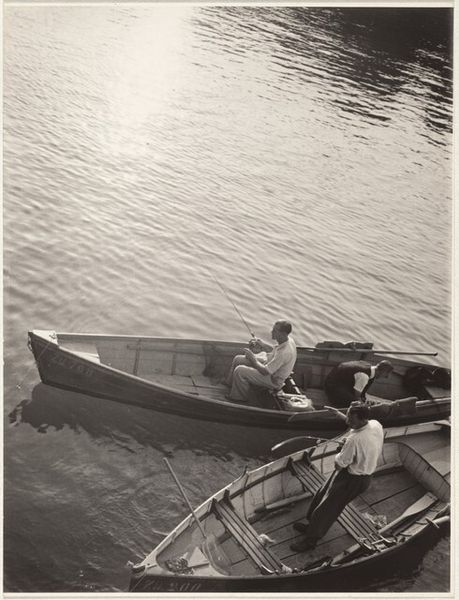
plein-air, photography, gelatin-silver-print
#
plein-air
#
landscape
#
photography
#
gelatin-silver-print
#
genre-painting
#
realism
Dimensions: Image: 16.4 x 28.9 cm (6 7/16 x 11 3/8 in.) Mount: 28.6 x 41.1 cm (11 1/4 x 16 3/16 in.)
Copyright: Public Domain
Curator: Here we have Peter Henry Emerson's "Setting the Bownet," a gelatin-silver print taken in 1886. The scene captures two figures in a small boat, seemingly in the midst of fishing. What's your immediate take? Editor: I'm struck by the almost dreamlike quality. It’s so serene. You feel the quiet of the water, the muted tones adding to the tranquility. The reflection of the bownets is hypnotic. Curator: Exactly! There's this feeling like we are stepping back in time and seeing this traditional rural life. I'm so drawn in by how Emerson captures this way of life in the English countryside, and how they’re clearly reliant on these natural processes. Editor: You know, those bownets themselves tell a story. Look at their construction – that intricate weaving. Each knot placed intentionally—and they show us what kind of labor went into daily sustenance. How it directly links those in the boat to the materiality of their work. And by the looks of that little boat, I'd imagine the pair are not well-off. Curator: Right, Emerson's aim was, in a way, to elevate this scene from something commonplace, presenting the work in a dignified light. These workers are connected so deeply to their environment and I would assume this is just something ordinary in their lives. I can almost feel myself floating gently along in the same waters. Editor: Absolutely. The realism movement really gave us some glimpses into scenes just like these—allowing us to consider their cultural capital. When looking at this piece, the light hits their work, exposing all of these different textures like the weeds behind them and the texture of the bownets themselves, making the composition so alive. Curator: Yes, his compositions, even when documenting scenes of labor, retain an artistry, wouldn't you say? Emerson straddles that line so cleverly—a critical and perhaps a little voyeuristic outsider capturing intimacy and familiarity of life and work from within. Editor: Indeed, each time, it feels like an invitation to really consider where our labor power is directed today and why these people still hold a sentimental importance. Curator: Looking closer makes me feel contemplative, considering the connections and rhythms of nature...a beautiful glimpse into a bygone world, yet also prompting questions that still echo today. Editor: I agree. Emerson gifts us with an enduring image of their toil.
Comments
No comments
Be the first to comment and join the conversation on the ultimate creative platform.
